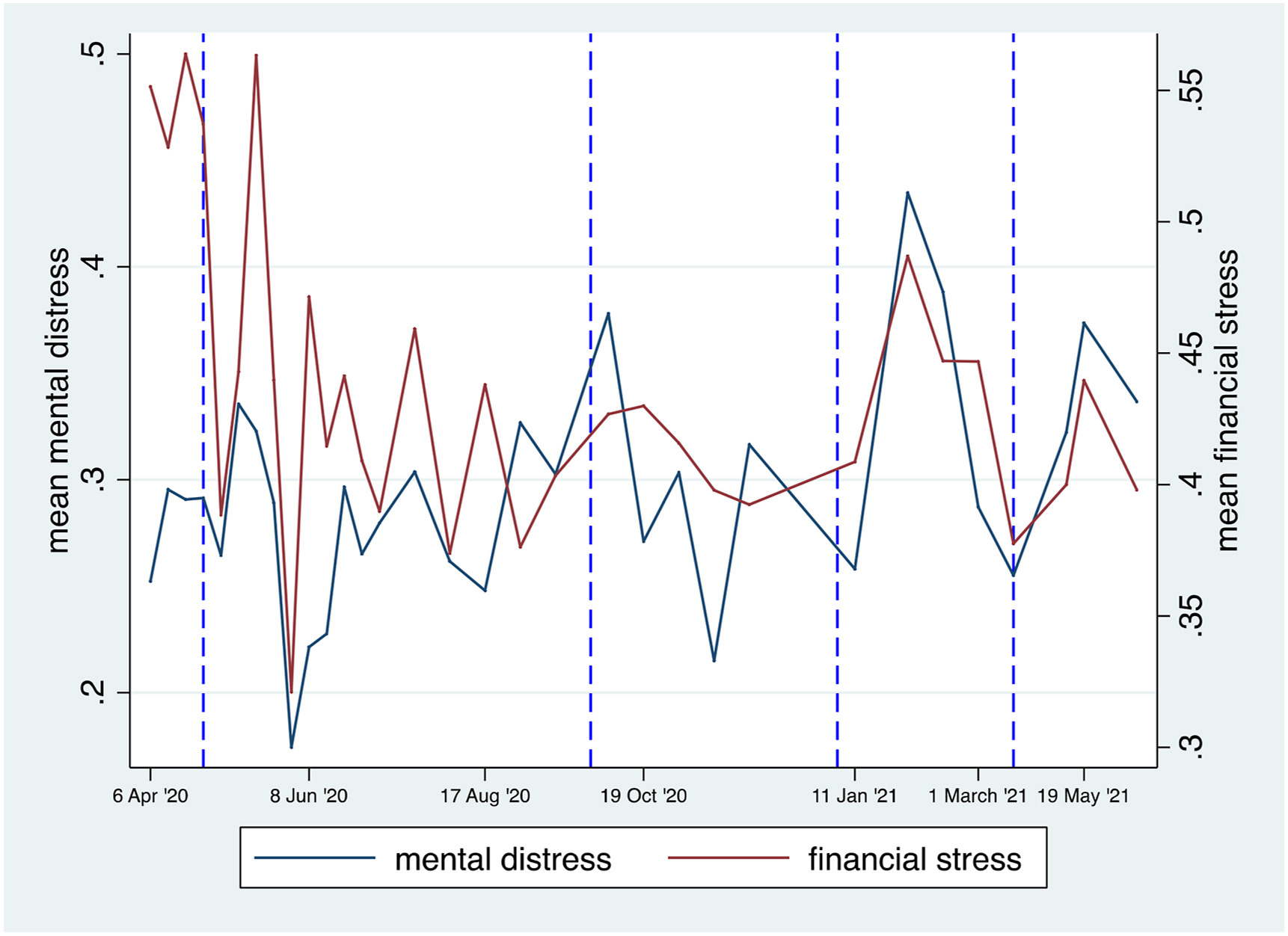Receipt of the Coronavirus Supplement was related to less financial stress and better mental health among its recipients. The improvement in mental health was partly due to the reduction in financial stress brought about by the temporary top-up payment.
In a recent study, we explored whether the Coronavirus Supplement protected the mental health of recipients, either directly or by reducing feelings of financial stress. We found that mental distress was substantially lower during periods the payment was received. And the lower rates of mental distress were due to the ability of the top-up payments to reduce rates of financial stress.
Income support lifted during the pandemic
The Coronavirus Supplement was unique income support program in Australia as part of the national government’s policy response to COVID-19. Introduced on 27 April 2020, it was a temporary supplement paid to recipients of the unemployment benefit and other welfare benefits with the purpose of replacing the lost income of Australians without adequate employment during the height of the COVID-19 pandemic. Between 27 April 2020 and 24 September 2020, the supplement amount was $550 per fortnight. This was decreased to $250 per fortnight between 25 September 2020 and 31 December 2020. The payment was further reduced to $150 per fortnight between 1 January 2021 to 31 March 2021, after which the top-up payment was discontinued.
There is strong evidence that financial stress is an important factor that increases the risk of mental health problems, including in high-income countries like Australia. As such, we focused on whether the Coronavirus Supplement lowered reported financial stress and whether this reduction in financial stress was in turn associated with lower mental distress.
Mental health improvements more pronounced among younger Australians
We used data from 32 waves (April 2020 to March 2021) of the Taking the Pulse of the Nation (TTPN) Survey with information on 3,843 unemployed Australians of working age. A person was defined as being in financial stress if they reported being ‘moderately’ or ‘severely’ stressed in terms of being able to pay for essential goods and services. Likewise, a person was defined as being in mental distress if they stated feeling depressed or anxious ‘most of the time’ or ‘all of the time’ during the past week.
Looking at trends in mental distress and financial stress (Figure 1), average mental distress tended to move in the same direction as financial stress. Implementation of the first $500 Coronavirus Supplement payment at the end of April 2020 was followed by a decline in mental distress and financial stress. Notably, each subsequent decline in the top-up amount was followed by increases in the prevalence of mental distress and financial stress.
Figure 1: Mental distress, financial stress, and the Coronavirus Supplement dates
Note: Each of the vertical dotted blue lines corresponds to a change in the Coronavirus Supplement. At the first vertical line the $550 payment was introduced, at the second vertical line the payment was lowered to $250, at the third vertical line the payment was further lowered to $150, and at the last vertical line the payment ceased.
In more formal analyses, we found evidence that higher levels of financial stress were strongly associated with higher levels of mental distress. The Coronavirus Supplement was directly related to lower financial stress. But the direct association between the supplement payment and financial stress was only observed for weeks with the $550 and $250 payments. This was the case for both women and men, as well as those aged younger than 50. There was little evidence of a direct association between the Coronavirus Supplement and financial stress for those aged 50-64, likely in part because this age group is more financially secure and not as dependent on the top-up payment as a source of alleviating financial pressures.
Protection of mental health weakened once the payments scaled back
Our main finding was that the association between the Coronavirus Supplement and mental distress was indirect rather than direct. In other words, the top-up payment managed to reduce mental distress via financial stress. Note the evidence also suggested that mental distress and financial stress were no longer protected once the Coronavirus Supplement payments were scaled back. Thus, the supplement payment appears only to have been successful when paid at a sufficiently high level. This suggests that more permanent and significantly higher levels of income support payments are necessary to produce longer-term sustained improvements in population mental health.
These findings underscore the importance of social assistance payments in protecting mental health during periods with increased financial stress. Relieving rates of perceived financial stress, via income support, can indeed substantially reduce mental distress. However, such income support should be of a more permanent nature and at sufficiently high levels to achieve better long-term mental health outcomes.
Journal article
Botha, F, Butterworth, P & Wilkins, R 2022, ‘Protecting mental health during periods of financial stress: Evidence from the Australian Coronavirus Supplement income support payment’, Social Science & Medicine, vol. 306, Article 115158.






Recent Comments